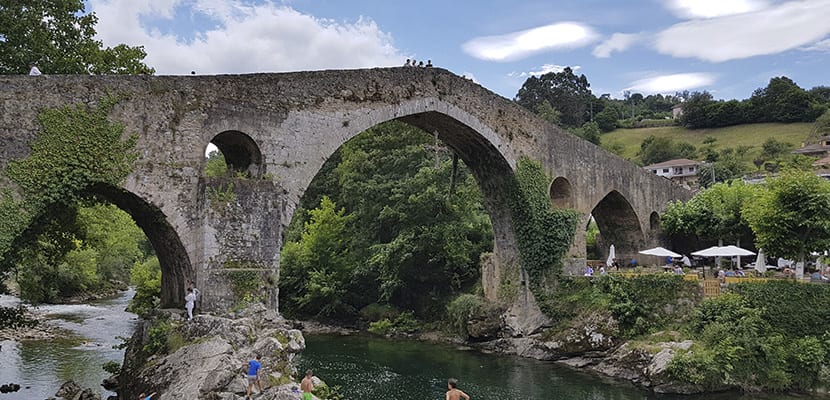
Cangas de Onís is located in the autonomous community of the Principality of Asturias. This council is a very touristy place and at the same time quite quiet. It is located in an area surrounded by natural spaces, so there is usually a mountain tourism that goes to the Picos de Europa visiting this town.
We are going to tell you what you can see in Cangas de Onís and its surroundings if you go to this Asturian town. On Asturias so much you can enjoy kilometers of beach with fishing villages and mountain towns and landscapes of great beauty.
History of Cangas de Onís
This has been a populated area at least since the Upper Paleolithic, as evidenced in the Caves of the Blue and Buxu, where different manifestations of prehistoric art have been found. One of the most important historical events occurred in the year 722 with the battle of Covadonga, which took place near Cangas de Onís. In this battle Don Pelayo's troops defeat the al-Andalus troops. This council was on several occasions the capital of the Principality of Asturias. Today it is a tourist place that receives hundreds of visitors a year to enjoy its history and the landscapes that surround it.
What to see in Cangas de Onís
In the town of Cangas de Onís there are some things to see, although tourism is usually oriented mainly to the Picos de Europa and activities in natural landscapes. But it is worth spending a day in Cangas de Onís to see what charms this town offers.
The roman bridge
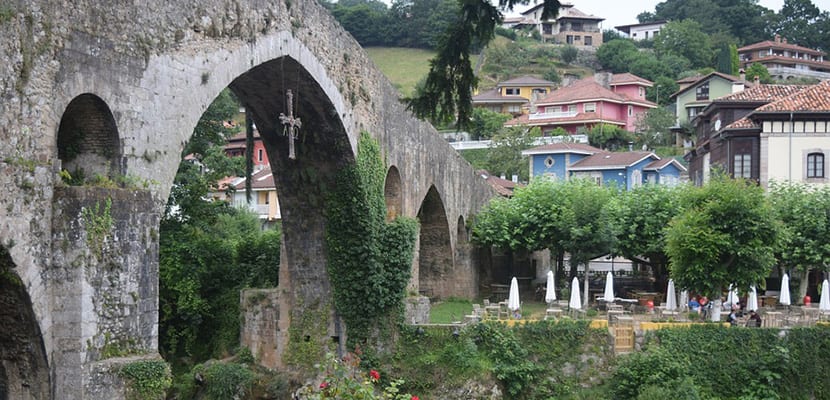
This is one of the symbols of Cangas de Onís that everyone recognizes in the photographs. El Puentón passes over the river Sella and separates it from the council of Parres. Although it is called a Roman bridge, the truth is that this bridge is of medieval origin, belonging to the period of Alfonso XI of Castilla. It is located on the old Roman road, hence it is associated with the Romans. It has a banded arch and two minor arches. This bridge has been restored numerous times to keep it in good condition. The cross that hangs from the central part of the largest arch was placed in 1939. It is the Victory Cross, a symbol of Asturias that was placed precisely because of the return of the Virgin of Covadonga from France after the Civil War.
The Church of the Asunción,
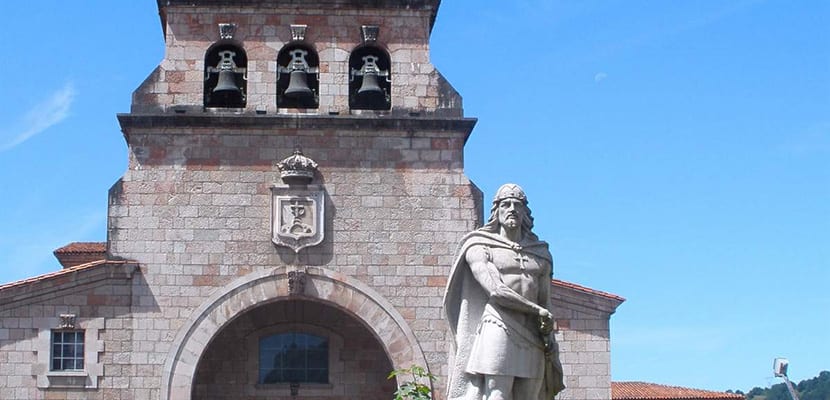
This church is of medieval origin and is located on the main street of the town, so we will see it almost without wanting to. It is quite striking for being a peculiar church. The building is quite recent, but it is settled on the remains of an older church of medieval origin, so this point must have been very popular then. Its bell tower stands out, built on three levels with an abundant set of bells. Very close to this church, just opposite, is the statue of Don Pelayo. A sculpture dedicated to the king and created in the 70s.
Pintu Palace
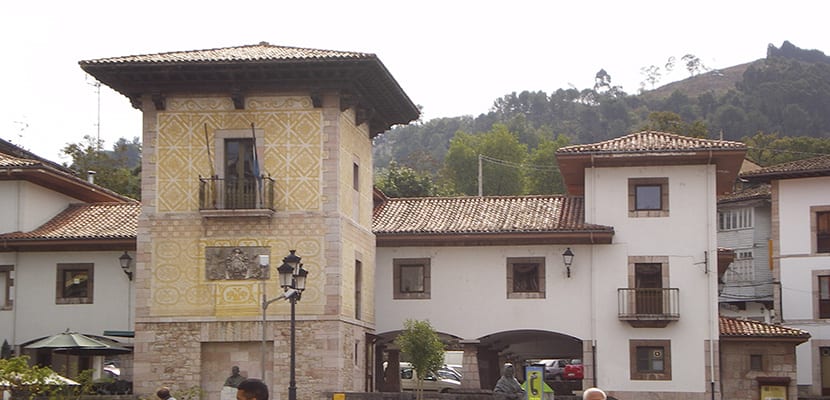
This beautiful building is also known as the Captain's House and it was built during this century copying another from the seventeenth century. On its north facade is the original coat of arms of the house. It is located on Calle El Mercado, although being a small town we will find everything very close.
Hermitage of Santa Cruz
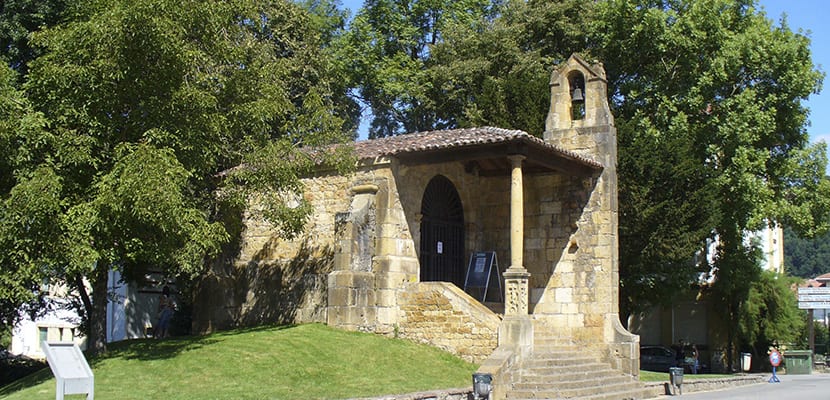
This old hermitage is located in Contranquil. It was built on a dolmen, being a place of great importance since ancient times. A reform uncovered the dolmen, a funerary structure from 4.000 BC. C. that today can be seen inside.
Picos de Europa
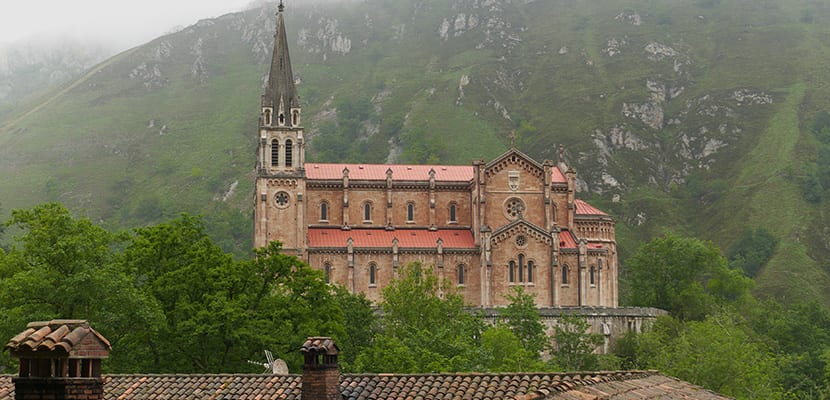
Outside the town of Cangas de Onís but very close is the National Park of the Picos de Europa. This natural space has a great value for its flora and fauna, with very beautiful places where you can go hiking. There are signposted routes and it is possible to go only to its most touristy areas.
The Lakes of Covadonga are really popular. Some large lakes located in the mountains. The Lake Enol and Lake La Ercina They can be visited by walking through the places that lead us from one to the other, being able to enjoy the incredible surroundings. It is in Lake Enol that the figure of the Virgin of Covadonga is submerged, which is taken out in procession only once a year.
Near these lakes you can also visit the Basilica of Covadonga in neo-Romanesque style. Another place to visit is the Santa Cueva, a small sanctuary that stands out because just below there is a small waterfall. Below is also the Fountain of the Seven Pipes or Fountain of the Sacraments. Without a doubt, a visit to the Picos de Europa and the Lakes of Covadonga is essential for those who pass through Cangas de Onís.